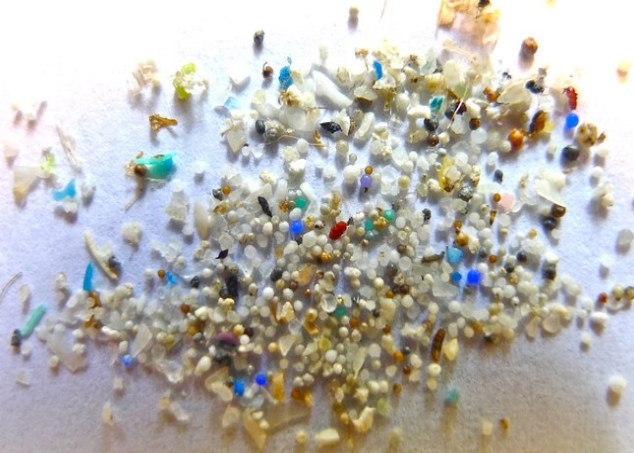
 Microplastics are plastics that are less than 5 mm in diameter and, though so small, are wreaking great havoc to the Great Lakes. One of the common ways for microplastics to enter the Great Lakes is through consumer care products, such as exfoliating body wash.
Microplastics are plastics that are less than 5 mm in diameter and, though so small, are wreaking great havoc to the Great Lakes. One of the common ways for microplastics to enter the Great Lakes is through consumer care products, such as exfoliating body wash.
In 2012, Dr. Sherri Mason, a professor at SUNY Fredonia, discovered an alarming concentration of microplastics in the three Great Lakes she studied: Lake Huron, Lake Erie, and Lake Superior. Lake Erie, in fact, has a higher concentration of these microplastics than any other body of water on Earth.
Microplastics pose several threats to the Great Lakes, wildlife, and humans:
- Wildlife may ingest the plastics, causing internal blockage, dehydration and death.
- A negative effect on ecosystems and habitats – Microplastics may change the amount of heat absorbed by the sand and affect organisms dependent on land temperature.
- Microplastics can absorb and transport pollutants already present in the water. These plastics then contain super-concentrations of toxins such as DDT, polyaromatic hydrocarbons (PAHs) and polychlorinated biphenyls (PCBs), which may then be ingested (directly or indirectly) by humans and wildlife.
The Great Lakes and St. Lawrence Cities Initiative have sent letters to regulators and those in the industry asking for a commitment to removing microplastics from products and cleaning up microplastics already in the Great Lakes. Read the full document here. The Cities Initiative has also enlisted its member mayors to reach out to local businesses and constituents to raise awareness of the issue.
Find out more about the extent of microplastic pollution in the Great Lakes with new research from the 5 Gyres Initiative, found here.



